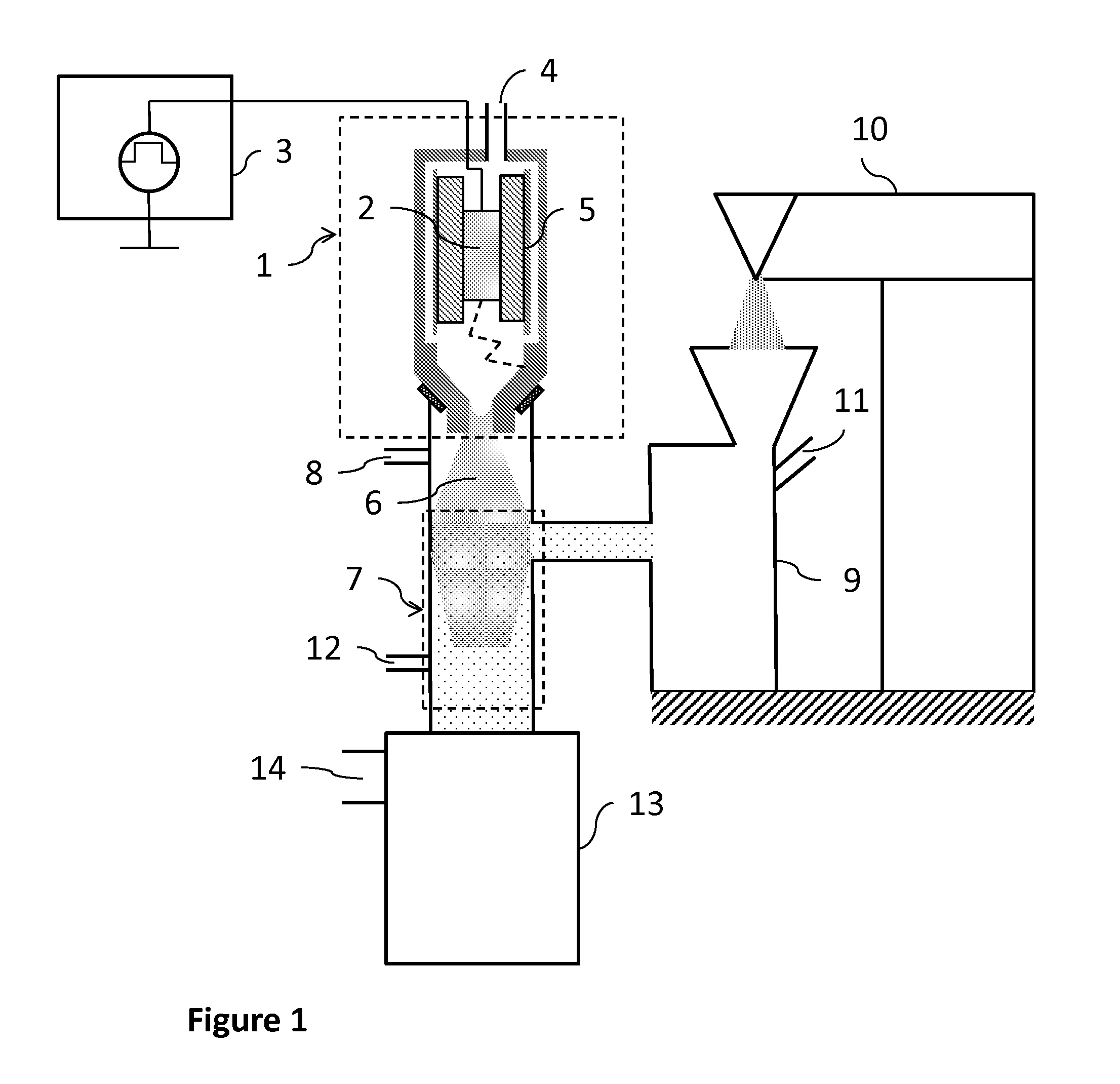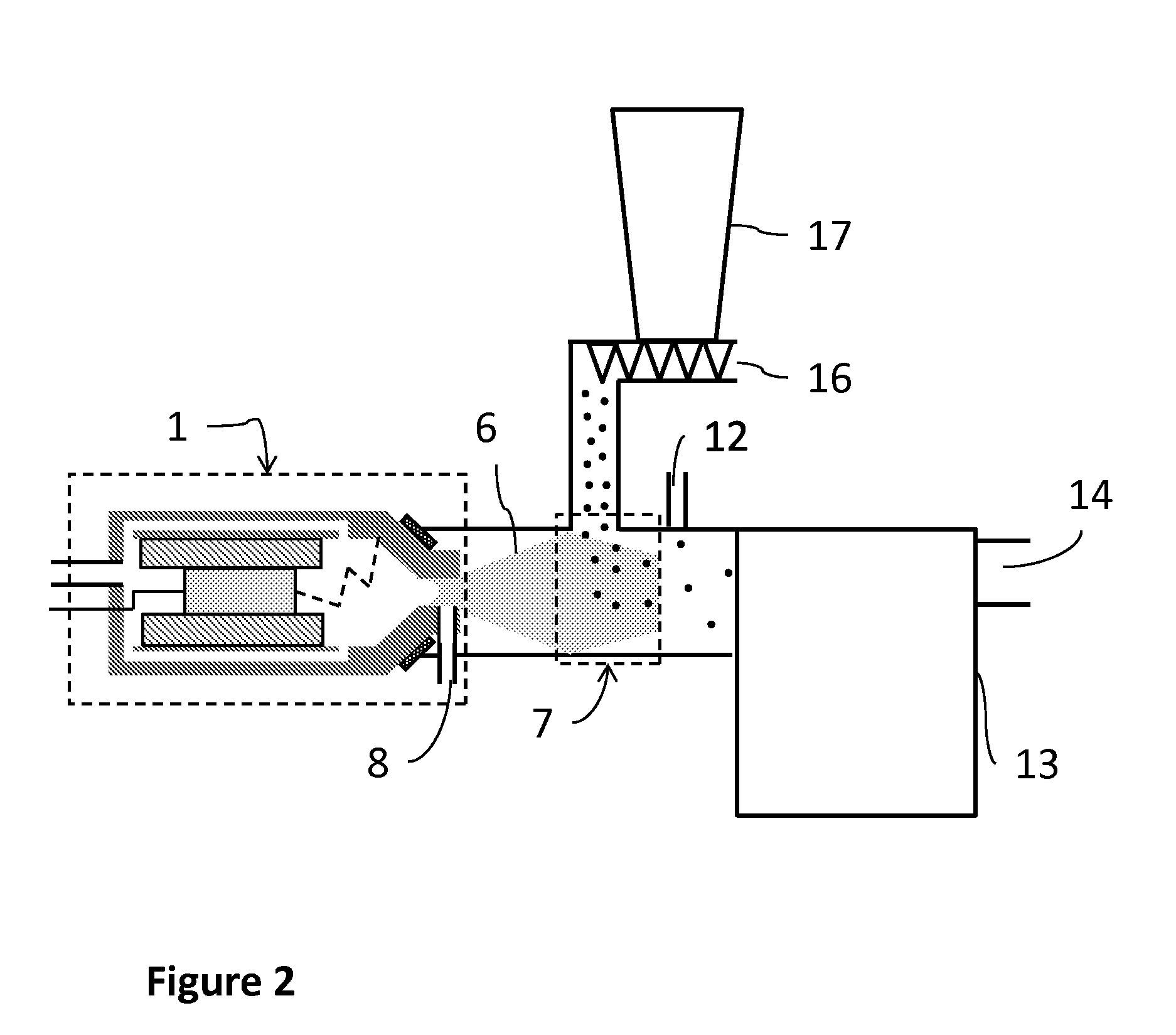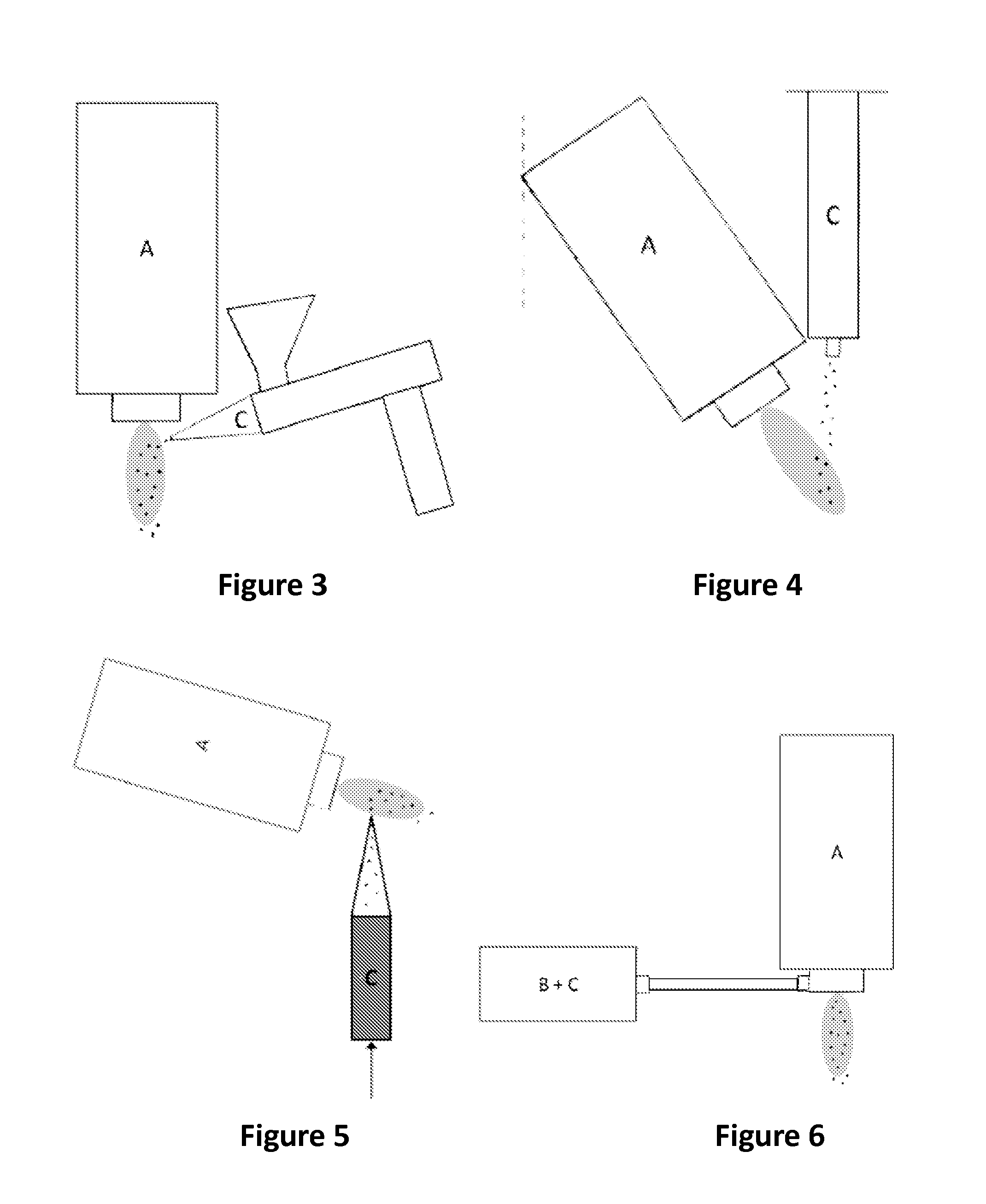Method and Apparatus for Surface Chemical Functionalization of Powders and Nanoparticles
a technology powder, applied in the field of surface chemical functionalization of powders and nanoparticles, can solve the problems of affecting processing, material degradation, and material quality, and affecting the processing quality,
- Summary
- Abstract
- Description
- Claims
- Application Information
AI Technical Summary
Benefits of technology
Problems solved by technology
Method used
Image
Examples
example 1
[0044]In this example, polytetrafluoroethylene (PTFE) particles from I. E. du Pont de Nemours and Company, 25 micron, are treated according to one aspect of the present disclosure using an apparatus similar to that shown in FIG. 1. The atmospheric pressure plasma device (Diener electronic GmbH+Co. KG, Germany) is comprised of a radio frequency RF power source operating at 20 kHz, 230 V, and 300 W. Air and nitrogen are used as the ionization gas and have a flow rate approximately 1,500 L / hr (standard temperature and pressure). Chemical precursors are added upstream from the treatment zone and consist of steam and a vaporized solution of 10% (hydroxyethyl)methacrylate (HEMA) in deionized (DI) water with flow rates ranging from 0-2 g / min. A jet mill disperser (Fluid Energy Processing & Equipment Co., Telford, Pa.) is used to disperse the particles into a carrier gas of nitrogen at 85 psig and the particles are transported through the system at a rate of approximately 2 g / min. Collectio...
example 2
[0047]In this example, polypropylene (PP) micro-sized particles of size 350 micron (Sigma Aldrich) are treated according to the teachings of the present invention. The atmospheric pressure plasma device is comprised of a pulsed DC power source (Plasmatreat GmbH, Germany) operating under conditions of 250-350 V, 3.7-4.1 Amps, a pulse frequency of 20-21 kHz, and a duty cycle of 90-100% with dry air as the carrier gas flowing at 1800 L / hr. The reactor configuration used in this example included feeding the polypropylene particles through a narrow channel with the transport driven by gravity, similar to FIG. 2. Deionized (DI) water and a solution of 10% HEMA in DI water are used as the chemical precursor and delivered at a rate ranging from 1-10 g / min into the plasma treatment zone. The treated particles are collected using DI water delivered in a port downstream of the treatment zone via a spray apparatus with nitrogen as a carrier gas to separate the treated particles and collect as a...
example 3
[0051]In this example, polymethylmethacrylate (PMMA) micro-sized particles of size 250 micron (Sigma-Aldrich Co. LLC) are treated according to the teachings of the present invention. The atmospheric pressure plasma device (Plasmatreat GmbH, Germany) is comprised of a pulsed DC power source operating under conditions of 250-350 V, 3.7-4.1 Amps, a pulse frequency of 20-21 kHz, and a duty cycle of 90-100% with dry air as the carrier gas flowing at 1800 L / hr. The reactor configuration used in this example included feeding the PMMA particles through a narrow channel with the transport driven by gravity, similar to FIG. 2. Deionized (DI) water and a solution of 10% HEMA in DI water are used as the chemical precursor and delivered at a rate ranging from 1-10 g / min into the plasma treatment zone. The treated particles are collected using DI water delivered in a port downstream of the treatment zone via a spray apparatus with nitrogen as a carrier gas to separate the treated particles and co...
PUM
| Property | Measurement | Unit |
|---|---|---|
| Force | aaaaa | aaaaa |
| Pressure | aaaaa | aaaaa |
| Hydrophilicity | aaaaa | aaaaa |
Abstract
Description
Claims
Application Information
 Login to View More
Login to View More - R&D
- Intellectual Property
- Life Sciences
- Materials
- Tech Scout
- Unparalleled Data Quality
- Higher Quality Content
- 60% Fewer Hallucinations
Browse by: Latest US Patents, China's latest patents, Technical Efficacy Thesaurus, Application Domain, Technology Topic, Popular Technical Reports.
© 2025 PatSnap. All rights reserved.Legal|Privacy policy|Modern Slavery Act Transparency Statement|Sitemap|About US| Contact US: help@patsnap.com



